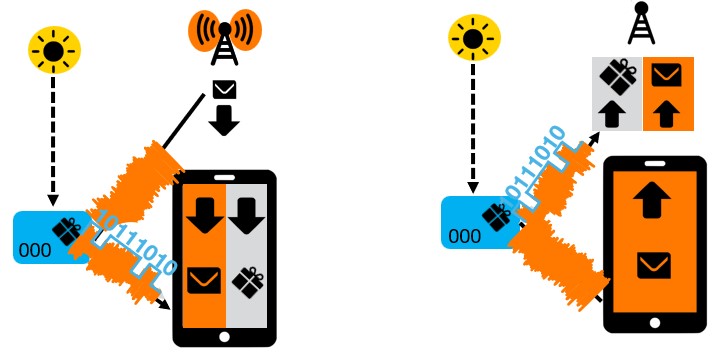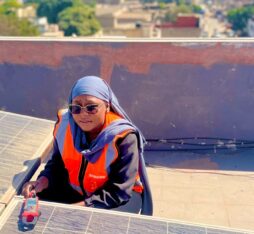• A sustainable and responsible method, based on Zero-Energy-Device (ZED) beacons, has been successfully demonstrated as part of a collaborative research project.
• This innovation, which illustrates the concept of ambient IoT connectivity, paves the way for the networks of the future.
Humans have always had to use maps to find their location and identify their positioning. GPS systems have made high capabilities accessible to as many people as possible. However, signals transmitted by satellites cannot pass through walls and therefore cannot provide good-quality indoor geolocation.
A new geolocation approach consisting of reflecting ambient signals broadcast by smartphones to base stations
The Zero Energy Device (ZED) is a game changer
There are multiple use cases for indoor geolocation. For example, an individual may need to pinpoint their location in a building or a company may want to track goods or robots.
Today, several solutions coexist, each with their own set of downsides: significant energy footprint, the need to deploy ad hoc infrastructures that are sometimes heavy and expensive, emission of additional waves etc. Localisation via Bluetooth Low Energy (BLE) beacons is the most common solution.
A promising alternative, demonstrated as a world first in a research project, it could become a reality in the future. Dinh Thuy Phan Huy, Orange Fellow, ZED Research Project Manager, and Head of the Networks of the Future Experts at Orange, explains the principle: “The aim of the game is to make use of what is available, namely mobile networks and smartphones. Between these two extremities, we place a Zero Energy Device (ZED) or tag, the concept of which was introduced in a research article published in 2021. ZED technology stands out for its zero energy usage: powering itself by absorbing natural or ambient light and storing it to ensure autonomy. Moreover, to avoid wasting the little energy it manages to recover, a ZED does not emit any waves, because this would consume too much energy. To transmit its message, it reflects existing ambient waves.”
Signals “bounce” through ambient backscattering
This unique technique is at the heart of the new geolocation approach, and is known as Ambient Backscatter Communication (AmBC). Smartphones regularly broadcast pilot signals to base stations. A nearby ZED backscatters these ambient signals through waves, to broadcast its identity. With these two messages – from the smartphone and the ZED – broadcast to the base station, the smartphone is informed of the presence of the ZED and can locate it.
Dinh Thuy Phan Huy illustrates the concept through an analogy: “The smartphone emits light to be seen by the base station, and the ZED is a mirror that alternates between a reflective state and a transparent state. The base station sees the light from the phone, as well as a precise sequence of flashes transmitted by the ZED. It is from this information that it can detect when a smartphone is near the ZED, and in the same room by extension.”
In the form of prototypes at present, these ZEDs are miniature, concentrated low-tech devices, including a solar panel, a battery, a microcontroller, a radio frequency switch and a dipole antenna (which allows it to alternate between transparent and reflective states). If the research effort continues to optimise their performance in terms of range and detection time, they have significant potential for more sustainable networks.
Communication of the future: ambient and responsible
This “ambient IoT” device, whose scope of implementation goes beyond indoor localisation, represents a promising sustainable alternative for the future. With ZED technology, a carrier could develop high value-added IoT applications, taking advantage of ambient connectivity (4G, 5G and beyond), without generating additional energy consumption or waves. Moreover, the device is low-cost to produce, requires no maintenance and has a targeted lifespan of more than 30 years. All of these advantages are aligned with Orange’s vision of the networks of the future, detailed in a recent white paper. In this respect, ZEDs are advancing as a key technological enabler for ambient networks, consistent with the issues of economic viability and environmental/societal sustainability.

Ambient Backscatter in Mobile Networks: Crowd-Detectable Zero-Energy-Device (CD ZED) concept
 Dinh Thuy Phan Huy
Dinh Thuy Phan Huy











